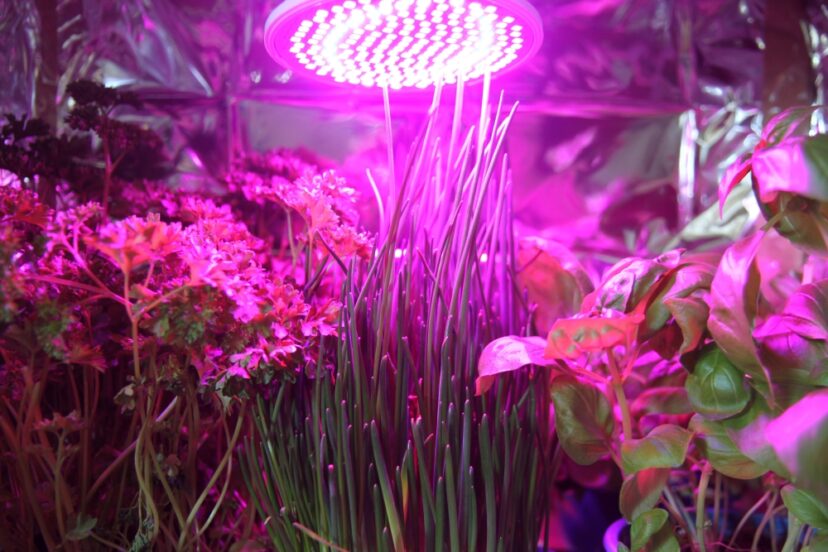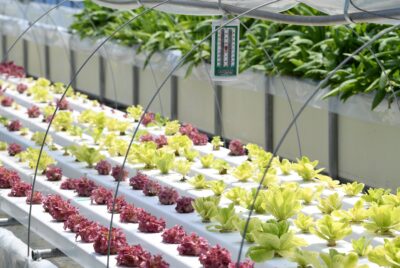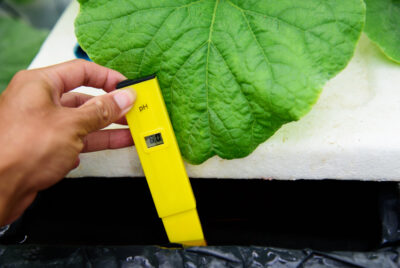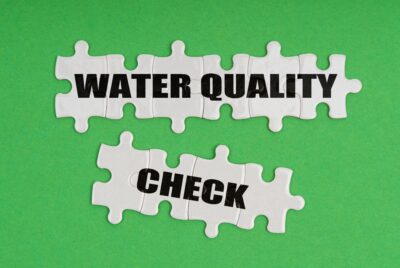Hydroponic Herbs
We may earn a commision from purchases made using our links. Please see our disclosure to learn more.
A Deeper Dive into Hydroponic Herbs.
The Science Behind Hydroponics.
To begin with, at its core, hydroponics, especially when cultivating hydroponic herbs, is all about biology and chemistry. Moreover, plants, especially herbs, require specific nutrients, usually derived from the soil. In hydroponics, however, we introduce these nutrients directly to water, thereby creating a rich solution for plant roots. Consequently, this direct access often results in faster nutrient uptake and growth.
Why Hydroponics is Changing the Herb Game.
Environmental Benefits.
First and foremost, in contrast to traditional farming methods, it’s important to note that hydroponics uses significantly less water. With water scarcity rapidly becoming a pressing global issue, this method offers a sustainable alternative. Additionally, there’s no soil erosion or land degradation.
Cost Efficiency over Time.
Initially, the setup can be expensive. However, in the long run, hydroponics often leads to higher yields, thereby making it cost-effective. Furthermore, no soil means fewer pests, and consequently, a reduction in the need for expensive pesticides.
Purity and Flavor are More Robust With Water-grown Herbs.
On the topic of taste and purity, without soil, there’s a decreased risk of soil-borne diseases. Also, high-tech herbs tend to be cleaner and often have a more robust flavor and aroma, primarily due to their concentrated nutrient intake.
Comprehensive Guide to Growing 15 High-tech Hydroponic Herbs.
Basil
- Flavor profile: Sweet with a hint of anise.
- Ideal conditions: Warm temperatures, pH of 5.5-6.5.
- Nutrient needs: Balanced nutrient solution.
- Harvesting: Pick leaves as needed, promoting bushier growth.
Mint
- Flavor profile: Cool and refreshing.
- Ideal conditions: Cooler temps, pH of 6.0-7.5.
- Nutrient needs: Requires magnesium and iron.
- Harvesting: Harvest top leaves, allowing the lower ones to grow.
Cilantro
- Flavor profile: Citrusy with a hint of pepper.
- Ideal conditions: Cooler temperatures, pH of 6.5-7.5.
- Nutrient needs: Balanced nutrient mix.
- Harvesting: Harvest outer leaves, letting the center ones mature.
Chives
- Flavor profile: Mild onion taste.
- Ideal conditions: Cooler temperatures, pH of 6.0-7.0.
- Nutrient needs: Balanced nutrient mix with additional potassium.
- Harvesting: Cut the leaves, leaving at least 2 inches for regrowth.
Lemon Balm
- Flavor profile: Light lemon aroma and flavor.
- Ideal conditions: Moderate temperatures, pH of 6.0-7.5.
- Nutrient needs: A balanced mix with a hint of extra iron.
- Harvesting: Harvest young leaves for the best flavor.
Sage
- Flavor profile: Pine-like flavor with hints of pepper.
- Ideal conditions: Warm temperatures, pH of 5.5-6.5.
- Nutrient needs: Balanced solution; sensitive to excessive nutrients.
- Harvesting: Pick leaves as they mature; avoid taking too many at once.
Watercress
- Flavor profile: Slightly peppery and tangy.
- Ideal conditions: Cooler temps, pH of 6.5-7.5.
- Nutrient needs: Requires a rich nutrient mix with ample magnesium and potassium.
- Harvesting: Harvest the top leaves, letting the plant continue to spread.
Arugula (Rocket)
- Flavor profile: Peppery and slightly nutty.
- Ideal conditions: Moderate temperatures, pH of 6.0-7.0.
- Nutrient needs: Balanced mix.
- Harvesting: Pick outer leaves, allowing inner leaves to grow.
Tarragon
- Flavor profile: Slight anise or licorice flavor.
- Ideal conditions: Warm temperatures, pH of 6.0-7.5.
- Nutrient needs: Balanced solution with added potassium.
- Harvesting: Harvest the tips of branches to encourage bushy growth.
Marjoram
- Flavor profile: Sweet and citrusy with a hint of pine.
- Ideal conditions: Warm temperatures, pH of 6.7-7.3.
- Nutrient needs: Balanced mix with additional calcium.
- Harvesting: Pick the leaves just before flowering for maximum flavor.
Thyme
- Flavor profile: Subtle, dry aroma with a hint of mint.
- Ideal conditions: Warm temperatures, pH of 5.5-7.0.
- Nutrient needs: Balanced solution.
- Harvesting: Harvest the upper green part, leaving the woody stem intact.
Rosemary
- Flavor profile: Strong, pine-like flavor.
- Ideal conditions: Warm and sunny, pH of 5.5-6.0.
- Nutrient needs: Balanced nutrient mix.
- Harvesting: Snip the top 2-3 inches of each sprig, allowing for regrowth.
Dill
- Flavor profile: Soft and sweet with a slightly earthy aroma.
- Ideal conditions: Moderate temperatures, pH of 5.5-6.4.
- Nutrient needs: Balanced solution with additional iron.
- Harvesting: Harvest when leaves are young and tender for the best flavor.
Oregano
- Flavor profile: Pungent and earthy with a hint of sweetness.
- Ideal conditions: Warm temperatures, pH of 6.0-7.0.
- Nutrient needs: Balanced nutrient mix.
- Harvesting: Harvest just before flowering for the best aroma and flavor.
Growing high-tech herbs involves various indoor hydroponic systems, each with its own set of advantages and appropriateness. The choice often hinges on the herb’s growth patterns, root system, and size. Let’s delve into the preferred hydroponic methods for the herbs listed:
Basil:
Deep Water Culture (DWC) is the most common system for basil. It allows the roots to hang directly in the nutrient-rich water, offering a consistent supply of nutrients. This method results in quicker growth and abundant yields.
Mint:
The Nutrient Film Technique (NFT) is excellent for mint. This method circulates a thin layer of nutrient solution over roots, ensuring they remain moist but still get plenty of oxygen.
Cilantro:
Ebb and Flow (or Flood and Drain) are ideal. Given cilantro’s preference for a bit of dryness between waterings, this method allows the growth medium to be flooded with the nutrient solution at intervals.
Chives:
DWC again fits chives. Their slender roots benefit from consistent access to both oxygen and nutrients.
Lemon Balm:
The NFT system works best as it allows for continuous nutrient flow without oversaturating the roots.
Sage:
DWC is preferable for sage because it allows the roots to take up as much water and nutrients as needed for its lush growth.
Watercress:
NFT is ideal, given the watercress’s natural propensity to grow in flowing water.
Arugula:
NFT is best suited for arugula due to its faster growth rate and the need for a consistent nutrient supply.
Tarragon:
The Ebb and Flow system is apt because Tarragon doesn’t like to be overly wet, and this system provides periods of dryness.
Marjoram:
DWC is recommended as constant access to nutrients promotes its fragrant and dense growth.
Thyme:
The Ebb and Flow system is great for thyme, allowing the plant’s delicate roots to breathe between waterings.
Rosemary:
DWC is the choice for rosemary. It appreciates the steady nutrient flow, especially as it grows taller and bushier.
Dill:
NFT is suitable due to its fast growth and delicate root system. This method ensures continuous feeding without drowning the roots.
Oregano:
Ebb and Flow is the best for oregano, as it appreciates the intermittent drying period that this system provides.
Parsley:
DWC works well with parsley. Its robust root system thrives in the continuously aerated nutrient solution.
General Considerations When Dealing With Your Hydroponic Herb Garden:
- Lighting: Ensure each herb receives adequate light, preferably from full-spectrum LED grow lights for hydroponics.
- Nutrient Solution: Regularly check and maintain the pH levels of your nutrient solution (usually between 5.5 and 7.0 for most herbs). Also, ensure that the electrical conductivity (EC) remains within the advised range to avoid nutrient burn or deficiencies.
- Environment: Temperature and humidity control are crucial for hydroponic growth. Keep temperatures around 65-75°F for most herbs. Humidity should be moderate, around 50-70%.
By choosing the right hydroponic method and providing the optimal conditions by using the correct hydroponic instruments and controllers you can monitor all aspects of your liquid-fed herb bounty, and you can achieve a consistent and bountiful harvest of fresh, tasty herbs.
The Challenges of Hydroponics.
While hydroponics has numerous advantages, it’s essential to acknowledge that it’s not all smooth sailing. For example, maintaining the right pH balance can be tricky. On one hand, the system promises unparalleled growth rates; on the other hand, it demands meticulous attention. Additionally, ensuring a constant power supply for water pumps and then carefully monitoring nutrient levels can present challenges. However, these are not insurmountable obstacles. Nevertheless, with modern monitoring systems and a bit of gardening passion, these hurdles are easily navigated. In essence, hydroponics offers incredible rewards, provided one is ready to invest time and effort.
Transitioning from Soil to Water: A Personal Experience.
To share a personal note, shifting from traditional to hydroponic farming was a revealing journey for me. There’s something uniquely satisfying in watching roots dance in the water and seeing herbs thrive. Particularly when you consider or realize that they’re absorbing pure, undiluted nutrients.
Conclusion and The Future of Hydroponics.
As we look toward the future, and as the world increasingly leans toward viable practices, hydroponics emerges as a leading rival beyond mere sustainability, this method promises pure flavors, medicinal benefits, and the sheer joy of observation. Equipped with the right tools and knowledge available today, anyone can embark on this rewarding journey. Whether you’re a culinary enthusiast seeking fresh flavors or perhaps someone geared towards therapeutic gardening, hydroponics offers a unique experience. Not only that, but as we can see, the future is green, and more importantly, it’s water-based!
FAQs
What’s the ideal water temperature for hydroponics?
Generally speaking, the ideal temperature for most herbs lies between 65°F and 80°F; however, it’s important to note that this can vary considerably, especially based on the specific herb.
Can hydroponics be combined with aquaculture?
Yes! This combination is called aquaponics. The fish waste provides nutrients for the plants, and plants help purify the water for fish.
Do hydroponic systems need a lot of upkeep?
Regular monitoring is vital. Nevertheless, once you start to understand the basics, and particularly when you dive deeper into the methodology, especially after investing some dedicated time to practice, it not only becomes easier but begins to evolve. Gradually, it not only simplifies but also slowly and unmistakably transforms into a crucial aspect of your daily routine.
Is it true that hydroponic plants grow faster?
Yes, direct nutrient access and optimal conditions often result in sped-up growth.
How can I prevent diseases in my garden?
Ensure good airflow, regularly check pH and nutrient levels, and keep your system clean.





Comments are closed.